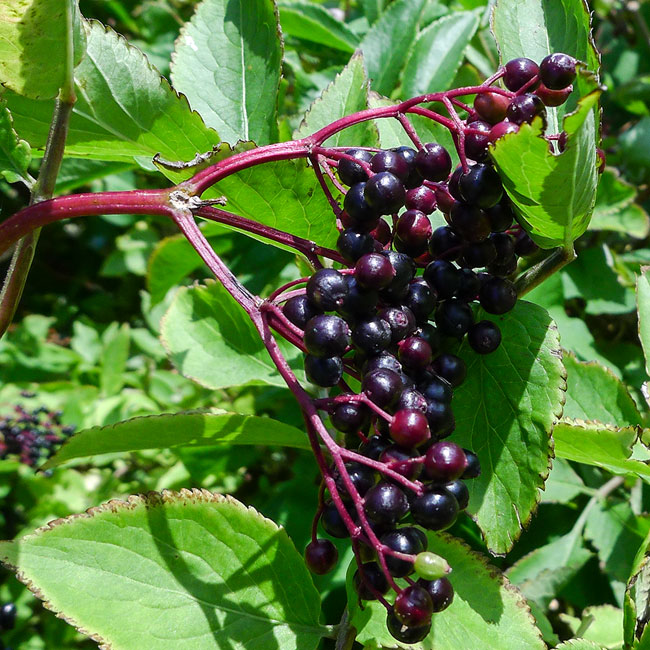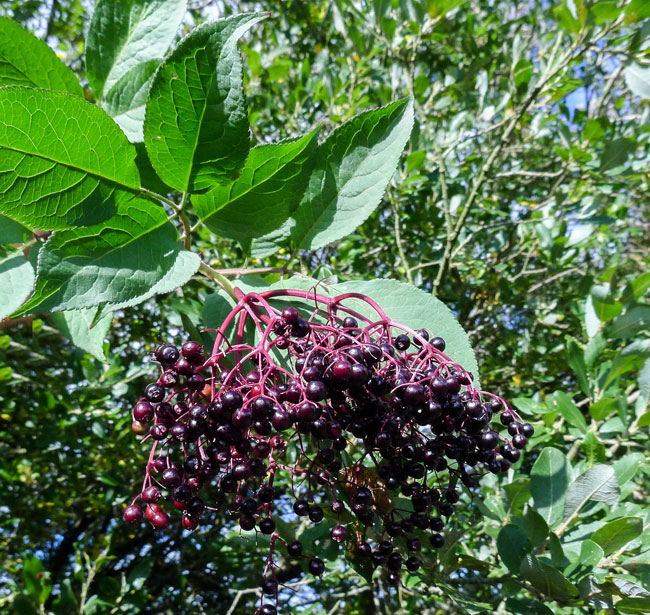
| Elderberry | |
| Fruit Taken at Belhaven Bay on 8th September 2019 using Nikon D500 with Sigma 600 mm zoom lens. |
 |

| Fruit Taken at Balgray Reservoir on 23rd September 2018 using Panasonic Lumix LX5 in macro mode |
 |

| Elderberry. |
| Species
: Order: Family: Habit: |
Sambucus
nigra. Dipsacales. Adoxaceae. Deciduous shrub. |
| Habitat: Height: Flowers: Feature |
Hedges, waste-ground roadsides and woods. Up to 6mts. Late Spring to Mid Summer. The dark blue/purple berries can be eaten when fully ripe but are mildly poisonous in their unripe state. All green parts of the plant are poisonous. The berries are edible after cooking and can be used to make jam, jelly and chutney The flowerheads are commonly used in infusions, giving a very common refreshing drink sold as Elderflower cordial The flowers can also be dipped into a light batter and then fried to make elderflower fritters. In Scandinavia and Germany, soup made from the elder berry is a traditional meal. Both flowers and berries can be made into elderberry wine, and in Hungary an elderberry brandy is made that requires 50 kg of fruit to produce 1 litre of brandy. In south-western Sweden, it is traditional to make a snaps liqueur flavoured with elderflower. Elderflowers are also used in liqueurs such as St-Germain, and in a mildly alcoholic sparkling elderflower 'champagne'. In Beerse, Belgium, a variety of Jenever called Beers Vlierke is made from the berries. |
|---|